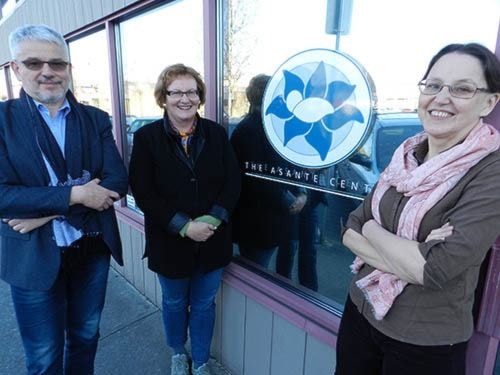A judge from Western Australia and a director of a health agency from Poland, agreed on one thing Tuesday.
Banning booze advertising could cut consumption and reduce the number of kids living with alcohol-damaged brains.
Stop those ads and you’ll stop alcohol companies from recruiting the younger generation of drinkers, which could include pregnant moms.
“It’s like smoking. The picture’s exactly the same (for alcohol) for young people,” said Catherine Crawford, a judge in Children’s Court of Western Australia, in Perth.
“You can be sexy whatever … if you’re drinking. And young women are in that frame because they want to be those people.”
The syrupy ads tell people that “life is beautiful with a glass,” added Krzysztof Brzozka, director of the State Agency for Prevention of Alcohol-Related Problems in Warsaw.
“You can see in those ads that everybody is drinking. It’s not true,” Brzozka added.
Both were at the Asante Centre in Maple Ridge for a day-long update about the programs the centre has pioneered in diagnosing and helping kids with fetal alcohol spectrum disorder.
Nine years ago, Poland launched an awareness campaign about FASD. Now it’s working on a pilot program modelled on that developed at the Asante Centre.
Poland is now adapting Canadian standards for diagnosing the condition, added Katarzyna Okulicz-Kozaryn.
“What they like the most is the system of key workers. I think that is the kind of support that is really needed.
“From our perspective, the amount of services you have here is enormous.”
A key worker is someone who represents an FASD child in the court system, education, in health care and social services, ensuring that the services that are delivered recognize the limits and abilities of those who have FASD.
The disorder, caused by a woman who drinks alcohol while pregnant, results in learning disabilities, and difficulties in memory and reasoning in the child.
Brzozka said while binge drinking is an Eastern European trait, in Poland, “It’s changed a lot. It’s not like it was 20 to 25 years ago. Of course, we drink a lot.”
However, much of the consumption is limited to a small percentage of the population. About 17 per cent of Poles drink 70 per cent of the alcohol consumed in the country.
The prevalence rate of FASD in the population is about two per cent, while Canada’s is half that, although the latter is based on U.S. statistics.
In Poland, hard liquor costs about $15 a litre.
Meanwhile, incomes have tripled in the last 15 years in Poland while the price of alcohol has remained cheaper, making it even more accessible.
“Alcohol is the most harmful, psycho-active drug,” Brzozka said.
“If you will add harms for users, harms for society, it is (worse) than heroine and crack.”
If he had his way, there would a minimum price for a unit of alcohol. That makes him public enemy number one in Poland but he’s OK with that, he added.
Crawford likes the idea. “Why not, if it’s the public at the end of the day that pays (in hospital and health-care cost, policing and judicial costs).”
She said booze and its costs are a huge issue in Australia and awareness of FASD is growing.
“Like Poland, we’re right at the beginning of the journey. There’s been lots of medical research … but in justice, very little is happening. Awareness is very low.”
While there’s a child development centre in Queensland, there isn’t a diagnostic facility in Western Australia and sentencing conditions handed to youth don’t recognize the limits FASD clients face, meaning they may not be able meet those conditions, which can lead them into more trouble.
“I want a sentencing plan that is not just a general one but one that is based on what this young person’s strengths and weaknesses are.”
She also likes the key worker program which can educate agencies about FASD and which can be a way for getting FASD kids back into school, using programs that meet their abilities.
One approach to reduce FASD is to use advertising and awareness campaigns such as putting warning labels on bottles. The U.S. employs the latter but not Canada.
But advertising and awareness campaigns are expensive, said Brzozka.
“Without the support, face-to-face intervention, the prevention is not effective.”
